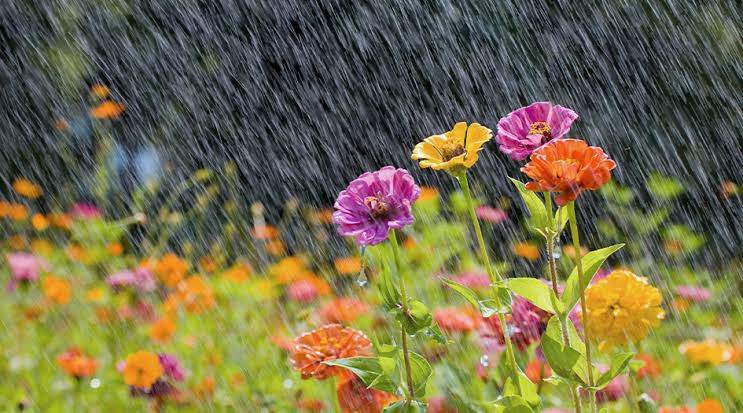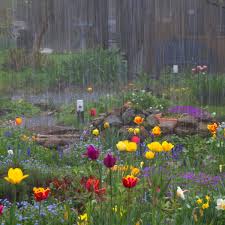The Importance of Planting During Early Rains
Planting during the early rains is a crucial agricultural practice that maximizes crop yield, ensures soil fertility, and enhances food security. This timing aligns with nature’s rhythm, providing young plants with the essential moisture they need to establish strong root systems. In many regions, especially those dependent on rain-fed agriculture, early planting can mean the difference between a bountiful harvest and a season of struggle. This essay explores the many reasons why planting during the early rains is not just beneficial but necessary for successful farming.
- Optimal Soil Moisture
One of the primary reasons for planting during early rains is that the soil becomes adequately moist, creating an ideal environment for seed germination. Seeds require a certain level of moisture to break dormancy and initiate the process of sprouting. Early rains ensure that seeds absorb enough water, increasing their chances of germinating uniformly and rapidly. Dry conditions, on the other hand, can delay or prevent germination, leading to poor crop establishment.

Additionally, moist soil makes it easier for plant roots to penetrate deeper, which is essential for long-term water and nutrient absorption. If seeds are planted in dry soil, they may struggle to grow roots effectively, making them more susceptible to drought later in the season.
- Reduced Risk of Drought Stress
Planting early ensures that crops take full advantage of the rainy season, reducing the likelihood of water stress later on. In many agricultural regions, rainfall patterns can be unpredictable, with periods of heavy rain followed by dry spells. Crops planted early have a better chance of developing deep root systems before any potential dry periods, enabling them to access underground water reserves.
When farmers delay planting, they run the risk of their crops reaching crucial growth stages, such as flowering and grain filling, during dry periods. This can significantly reduce yields, as plants require adequate moisture at these stages to produce healthy fruits and grains.
- Improved Soil Structure and Fertility
Early rains help soften the soil, making it easier for farmers to prepare their fields. Dry soil can be hard and compact, making plowing and planting difficult. When the rain falls, it naturally loosens the soil, allowing for better aeration and root penetration.
Furthermore, early planting allows crops to benefit from the natural decomposition of organic matter in the soil. Rainwater helps break down plant residues and organic material, releasing essential nutrients that support seedling growth. If planting is delayed, some of these nutrients may leach away or become unavailable to plants.
- Better Weed and Pest Control
Weeds compete with crops for water, nutrients, and sunlight. When planting is done early, crops get a head start and can establish themselves before weeds become too aggressive. If planting is delayed, weeds may germinate first, making it harder to control them without extensive weeding or the use of herbicides.
Similarly, early planting can help reduce the impact of pests and diseases. Many insect pests follow seasonal life cycles, and their populations tend to increase as the rainy season progresses. By planting early, crops can reach a more resilient growth stage before pest infestations become severe. This reduces the need for pesticides, lowering production costs and minimizing environmental impact.
- Higher Yields and Increased Productivity
Timely planting leads to better crop yields. Studies have shown that crops planted during the early rains are more productive than those planted later in the season. This is because they experience favorable growing conditions throughout their development, ensuring proper flowering, pollination, and fruiting.
Farmers who plant early also have a better chance of harvesting their crops before adverse weather conditions, such as excessive rains or strong winds, damage their fields. Delayed planting often means that crops mature during the peak of the dry season or during periods of heavy rain, both of which can reduce harvest quality and quantity.
- Efficient Use of Agricultural Inputs
Agricultural inputs such as fertilizers, herbicides, and pesticides work best when applied at the right time. Planting early ensures that fertilizers are used efficiently because moisture helps dissolve nutrients, making them more accessible to plants. When fertilizers are applied late in the season, there is a higher risk of nutrient loss due to runoff or evaporation.
Similarly, herbicides and pesticides are more effective when applied at the right stage of crop growth. When planting is delayed, weeds and pests may already be established, requiring higher doses of chemicals, which increases costs and environmental risks.
- Ensuring Food Security
Early planting plays a vital role in food security at both household and national levels. When farmers plant early and secure good yields, food availability increases, reducing the risk of hunger and malnutrition. This is particularly important in regions where agriculture is the primary source of food and income.
Early planting also allows for staggered harvesting, meaning that food supplies can be spread out over a longer period rather than arriving all at once. This helps stabilize food prices and ensures a steady supply of fresh produce.
- Economic Benefits for Farmers
From an economic perspective, early planting provides multiple advantages. Farmers who plant early are often able to sell their produce at higher prices because they enter the market before supplies peak. Early harvests mean less competition, allowing farmers to get better prices for their crops.
Additionally, early planting reduces the risk of total crop failure. By ensuring good establishment and growth, farmers are more likely to achieve profitable yields, allowing them to reinvest in their farms and improve their livelihoods.
- Climate Change Adaptation
With the increasing unpredictability of weather patterns due to climate change, early planting is an effective adaptation strategy. Farmers who plant early are better positioned to deal with irregular rainfall, temperature fluctuations, and extreme weather events.

In some cases, early planting can help mitigate the impact of floods. When crops are already well established, they are less likely to be washed away by heavy rains compared to young seedlings planted later in the season.
- Sustainability and Environmental Benefits
Early planting supports sustainable agriculture by promoting efficient water use and reducing reliance on artificial irrigation. By taking advantage of natural rainfall, farmers can conserve water resources and reduce their dependence on groundwater and rivers.
Additionally, early planting helps maintain soil health by preventing erosion. When crops are planted on time, their roots help stabilize the soil, reducing the risk of topsoil loss due to heavy rains or wind. This ensures long-term agricultural productivity and environmental conservation.
Conclusion
Planting during the early rains is a practice that offers numerous benefits, from improved soil conditions and higher yields to better pest control and economic gains. It ensures food security, promotes sustainable agriculture, and helps farmers adapt to climate change. By planting early, farmers can make the most of natural rainfall, optimize their use of resources, and secure their livelihoods.
Governments and agricultural organizations should support early planting initiatives by providing timely weather forecasts, distributing high-quality seeds, and educating farmers on best practices. When farmers understand the advantages of early planting and are equipped with the right tools and knowledge, they can improve their productivity and contribute to a more stable and sustainable food system.
In conclusion, planting early is not just a recommendation—it is a necessity for successful farming. By aligning agricultural activities with the natural rhythm of the rainy season, we can ensure healthy crops, abundant harvests, and a resilient agricultural sector that can withstand the challenges of a changing climate.
@tipu curate
Upvoted 👌 (Mana: 29/39) Liquid rewards.